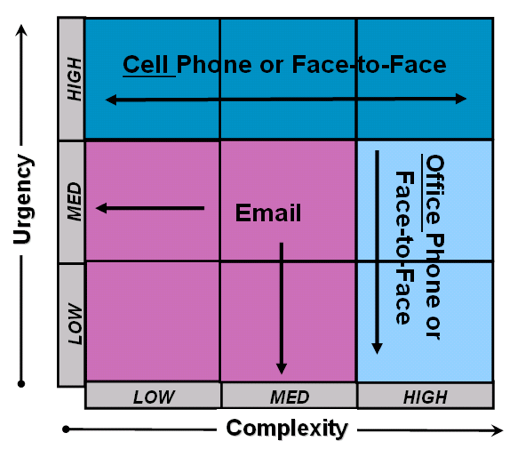I'm back from the annual Shingo Conference, where my book, A Factory of One, received a Shingo Research Award. A common topic of conversation at the meeting was the importance of standard work in an organization. Seems that whether you're talking about the factory floor or "carpetland" (the office), companies aren't reaping nearly as much benefit from standard work as they could. The R&D engineers at one of my clients have done some interesting work in this area. They're inundated with email (like most people), and they're obligated to check messages as they come in because there might be something urgent. Of course, most messages aren't urgent at all, but the possibility -- and the anxiety -- exists that they might miss something critical, like a major product quality problem.
Their situation is hardly unique, of course. But unlike most groups who simply wave their hands feebly and bemoan their fate, they've deployed standard work to fix the problem. They created a new, standard communication protocol:

Pay attention to the critical benefit here: everyone has agreed that email is NOT to be used for urgent or complex issues. This agreement really is significant, because it unshackles people from their BlackBerries during meetings, or product development work, or strategic planning. Or their kids' soccer games. Or dinner. Or sex. Which means that there's now a fighting chance to have some uninterrupted time to, you know, think.
This protocol isn't a breakthrough along the lines of, say, cold fusion. (Or duct tape. Or Oreos, for that matter.) However, the clear expectations and standards around the use of communication tools give the engineers license to ignore the beep of their smartphones and focus on real value-creating activities.
This exact protocol might not work for you. You might want to account for text messages, or IM, or even old-school memos. Every company has an idiosyncratic culture and needs. The important thing isn't how you define your communication protocol, but that you define it.
Give it a try, and let me know how it works out.
